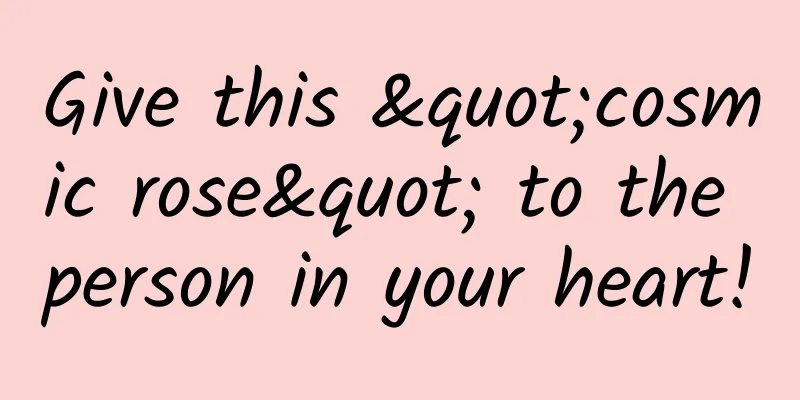Blindsight: Even though you can't see anything, your guesses are frighteningly accurate!

|
Leviathan Press: In 1974, researcher Larry Weiskrantz coined the term "blindsight" to describe the phenomenon in which patients can still respond to visual stimuli even though they have lost conscious vision due to damage to the visual cortex. (www.pnas.org/doi/10.1073/pnas.1015652107) These patients cannot read, watch movies, or do anything that requires detailed processing. But if they are asked to guess the location of a bright light in front of them, they are not just guessing blindly, and their guesses are very accurate. Although they feel that they cannot see anything, their "guesses" are surprisingly accurate. In other words, although they do not have a visual cortex, other areas of their brain can still detect the presence of light and provide relevant location information. Since then, a blindsight patient has been studied to understand why we can sense that someone is looking at us from behind, even if we don't consciously see that person. Alan J Pegna of the University Hospital of Geneva in Switzerland has assembled a team to work with the patient, who goes by the pseudonym TD. TD has participated in a series of studies detailing what people can and cannot do without a visual cortex. The studies included looking at photos of faces with both eyes looking forward; looking directly at the observer; or turning the eyes to the side and looking away from the observer. For anyone with normal vision, this is a piece of cake. Every time you see a face, you have a clear visual impression. But TD no longer has this conscious visual impression. He feels like he is blind. The results of the MRI scans show that the brain can be acutely aware of things that are not consciously sensitive. The area of the brain that processes emotions and faces is called the amygdala. When TD looked at the faces head-on, his amygdala became more active. (www.jneurosci.org/content/33/25/10483) This study shows that even if we don't "consciously" see someone looking at us, we can feel that someone is looking at us, and they may be in our field of vision or somewhere in the corner of our visual range. It is our amazing brain that can detect these subtle feelings that tell us that someone is looking at us from behind. For 10 months, Ernest Shackleton and his expedition had been trapped in Antarctica’s ice on their way to the South Pole, the weight of the ice beginning to weigh down their three-masted sailing ship, the Endurance. The Endurance slowly sank to the bottom of the Weddell Sea under the watchful eyes of the sled dogs. © wikipedia When the hull began to crack, the men had to abandon the ship and camp on the ice. A few weeks later, the Endurance sank. The cold days lasted for a long time, but when their ice campsite cracked, revealing a waterway for the lifeboat to pass, the men saw hope. In May 1916, the explorers set out for land, battling fierce winds, currents, and ice floes. They rowed until they were exhausted. Soon after, they began to see something strange: “ Among the huge, fantastic outlines of icebergs and floes, there appeared forms resembling human faces and living creatures ,” Shackleton wrote in their account of their survival, South. During one 36-hour trek, traveling with two crewmen across mountains and glaciers, Shackleton wrote in his book, “I often felt that we were four men instead of three.” Inspired by Shackleton’s account, the poet TS Eliot wrote in The Wasteland: “ Who is that third person who always walks beside you? ” Now cognitive scientists have begun to explain this mysterious third person, finding that the sense of an invisible person's presence is often caused by a disruption in the neural connections that link expectations with actual experience. Under extreme conditions, or when connectivity is broken and actions don’t match unconscious expectations—like seeing land, a rescue team—our brain feeds our mind a phantom substitute. Ben Alderson-Day, associate professor of psychology at Durham University and author of Presence, winner of the 2023 British Psychological Society Book Award, said it doesn’t always take an extreme situation like Shackleton’s to create the illusion of someone being around: “When people are put into a social situation where they need to take action or change position to ensure their safety, they often describe a very clear feeling that someone is with them.” Psychologists and neuroscientists have long suggested that this experience of feeling a presence may be related to the prevalence of ghosts, apparitions, and visions in all cultures. An early theory proposed by psychologist Justin Barrett in the 1980s attributed this paranormal phenomenon to a “hyperactive agency detection device” (HADD), a neural mechanism that predisposes us to assume the existence of purposeful agents.[1] This mechanism exists because of our evolutionary success in detecting predators, which makes us more inclined to act cautiously. Persinger said each individual's interpretation of their experience came down to their culture and personal beliefs - some described the presence as "God", others as the spirit of their recently deceased grandmother, others as aliens, and some even felt like a doppelganger. © Cambridge Skeptics Around the same time, the late psychologist Michael Persinger (1945-2018) began his infamous “God Helmet” experiments[2]. He created weak electromagnetic fields in motorcycle helmets that participants wore during sensory deprivation. Persinger claimed that he could induce a sense of another person’s presence, usually in the form of God, in 80% of his participants (although almost all subsequent replications have failed to confirm this effect). More recently, Olaf Blanke, a Swiss-German neurologist working in Lausanne, has been using a more rigorous approach than Pasinger.[3] While evaluating a 22-year-old woman for epilepsy surgery, his team discovered by accident that they could induce neural activity that could sustain a sense of another person’s presence. 3D surface reconstruction of the left hemisphere of a patient with epilepsy (a) using magnetic resonance imaging. The patient had subcranial electrodes implanted during preoperative evaluation. The images show how local electrical stimulation at specific locations elicits different responses (red, movement; blue, somatosensory sensation; green, speech; pink, areas that can induce a sense of ‘other presence’ [arrows]); asterisks indicate epileptic foci. The patient has been seizure-free since undergoing left temporal lobectomy. b–d are schematic diagrams showing the relative position and posture of the patient’s body (white) and a fictitious character (shaded) during cortical stimulation. © M. Boyer The procedure involved stimulating specific parts of her brain with electrodes, a fairly common technique that can produce a variety of hallucinations and perceptual experiences. But this time, after a mild burst of electric shocks, the patient reported a clear but invisible person behind her. In a subsequent stimulation, she reported a man holding her in his arms. © SpringerLink The brain region stimulated is called the temporo-parietal junction, where the temporal and parietal lobes of the brain meet. This area plays an important role in processing information about one’s physical body relative to one’s own and other bodies. If it is damaged or malfunctions, it can trigger strange out-of-body experiences, in which a person sees themselves from a distant, disembodied perspective. Malfunctions can also distort the normally clear boundaries between self and other. To explore body illusions, Blank and his team built an experimental setup[4] that seemed inspired by the novels of Philip K. Dick. Participants wore tactile sensing devices that tracked their finger movements as they poked at a blank space in front of them. These movements were replicated by a robot behind them, which then poked them in the back (but the robot was invisible to the participants). © Alain Herzog/EPFL When there was a delay between the participant’s action and the feeling of being poked—disrupting the causal relationship between action and feeling—the participants attributed the poking action to an invisible but felt surrogate. Impaired self-body signals “cause the brain to misinterpret one’s own body signals and attribute them to someone else,” explains Fosco Bernasconi, a senior scientist working with Blank. Neurological models of motor control (called “forward models”) show that every time we perform an action, we generate predictions in the form of neural body signals (called “efferent copies”) that allow us to anticipate the consequences of our actions. When this causal relationship is disrupted by delays and deviates from our expectations, our brains can resolve this mismatch by attributing it to the actions of others. That makes sense, Alderson-Day said: “If you disrupt the sensorimotor signal, you might have the experience of a phantom body.” The initial opportunity that inspired Alderson-Day to study the "sense of other presence" came from a patient who kept hearing voices. The patient did not need to perform any actions to hear the voices. He could hear them at any time as long as he wanted to, as if the voices were always "there". This experience of presence fits well with another theory that explains its neural basis, called predictive processing, which posits that when a person has a high degree of unconscious predictions or expectations about events, they can generate an overriding perceptual bias.[5] Predictive processing is a revolutionary theory because it overturns the idea that perceptual experience is primarily constructed from incoming sensory signals. Instead, it implies that experience arises from a mental model of the world that is constantly updated. Our brains are constantly generating predictions around our sensory input. If we encounter something new, our brains may initially provide incorrect predictions, but as more information accumulates, it adjusts the model to fit reality. The theory nicely explains the vast array of brain connections involved in making sense of the world (incoming sensory signals alone account for only 1 to 2 percent of the brain’s energy expenditure). It also explains why our perceptual experiences can be so easily misled. Even a slight interference between expectations and experience can lead to the “feeling of others,” says Alderson-Day. “Predictive processing basically says that we are all prone to experiencing the feeling of others and other hallucinations because we all rely to some degree on perceptual expectations about the world.” In the freezing cold of Antarctica, it’s not just the extreme conditions that give rise to the “third person who is always with you”, but also the hardships that Shackleton and his crew endured, and the desperate need to find a rescue team. These experiences are universal to all of us, so the next time you feel the illusion of someone beside you, you will also think about why you feel this way. References: [1]brill.com/view/journals/jocc/7/3-4/article-p341_9.xml?language=en [2]www.ncbi.nlm.nih.gov/pmc/articles/PMC7966009/ [3]www.nature.com/articles/443287a [4]fbernasconi.netlify.app/publication/bernasconi_2022/[5]www.sciencedirect.com/topics/psychology/predictive-processing By Phil Jaekl Translated by tamiya2 Proofreading/tim Original text/nautil.us/why-we-sense-somebody-who-isnt-there-469446/ This article is based on the Creative Commons License (BY-NC) and is published by tamiya2 on Leviathan The article only reflects the author's views and does not necessarily represent the position of Leviathan |
>>: When someone calls, he will answer anything you give him? Really?
Recommend
Can smart projectors bypass radio and television supervision?
Previously, the State Administration of Radio, Fi...
Traffic, winners, paid future... this year of content entrepreneurship!
The top picture of this article is Luo Zhenyu, th...
17TV Xiong Wen: Under a big tree, another big tree cannot grow
In the era of smart home, Internet TV is obviousl...
DeepLink page jump technology between mobile applications
Introduction to DeepLink DeepLink is a technology...
Not only does CES become a car show, driverless technology also wants to subvert the world
115 exhibitors from the automotive technology ind...
Combined with "Growth Hacker", let's talk about 18 cases of user growth
It took me three days to finish reading " Gr...
New research! Exercise can relieve anxiety and depression! The three most effective ones are these →
There are too many things to do in life and no id...
How much does it cost to customize a practical information mini program in Yantai?
More and more businesses are paying attention to ...
Introduction to Humanistic Psychotherapy
Introduction to Humanistic Psychotherapy A humani...
Can Pechoin’s 0.008% conversion rate wake you up from your dream of swiping the screen?
Recently, Pechoin ’s amazing advertisement was al...
A clear, complete and reusable solution for recalling lost users
Peter Drucker, the father of modern management, o...
TK Growth Conference-2021 New Upgrade TikTok Traffic and Monetization System Course
TK Growth Conference-2021 New Upgrade TikTok Traf...
What if Hammer had priced the phone at 1999?
The biggest news in the mobile phone industry rec...
Android phone cost-effectiveness ranking list in November 2019
The annual Double 11 has passed quickly. The pric...
Xigua Video iOS Voice Over Accessibility Adaptation Practice
Author: Chen Junlin In order to solve the difficu...









